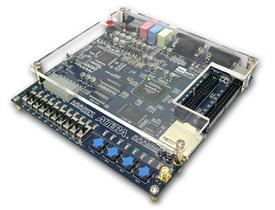
The ALTERA® DE1 Development and Education board is a smaller version of the DE2 board. It is useful for learning about digital logic, computer organization, and FPGAs. Featuring an Altera Cyclone® II 2C20 FPGA, the DE1 board is designed for university and college laboratory use. It is suitable for a wide range of exercises in courses on digital logic and computer organization, from simple tasks that illustrate fundamental concepts to advanced designs.
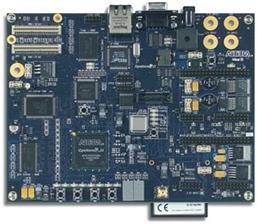
Altera’s Nios® II Development Kit, Cyclone® II Edition provides everything needed for system-on-a-programmable-chip (SOPC) development. Based on Altera’s Nios II family of embedded processors and the low-cost Cyclone II EP2C35 device, this development kit provides an ideal environment for developing and prototyping a wide range of price-sensitive embedded applications.
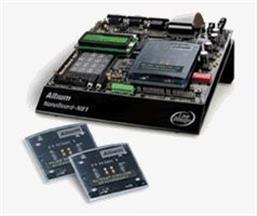

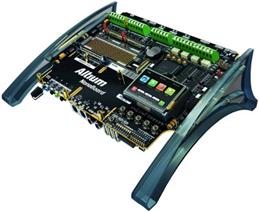
Nanoboard NB1 - Altium
Fully compatible with Altium’s LiveDesign-enabled tools.
Allows rapid and interactive implementation and debugging of FPGA designs. Plug-in daughterboard system supports a wide range of target FPGAs. Target programmable devices are housed on plug-in daughterboards.
Includes power pack with multiple plugs for various electrical outlet configurations. Includes ribbon cable for PC connection, and other cables and connectors.
Extensive NanoBoard technical hardware reference manual.
Peripherals include: LCD, LED array, switch array, keypad, buzzer, ADC/DAC.
2 MB RAM, XXXM serial Flash RAM, onboard serial Flash RAM for FPGA configuration, and programmable clock.
Ports include: PS/2 mouse and keyboard, RS-232, CAN, VGA, I2C, and general-purpose I/O headers.
Upgradeable NanoBoard controller firmware.
Integrated heavy-duty NanoBoard stand.
The NanoBoard NB2 enhances your ability to design, implement and debug an entire FPGA-based system design before moving to a production PCB. Use the NanoBoard as a system prototyping and development platform, as an educational hands-on teaching tool, or as a complete test bed for FPGA-based embedded system design. Its power, flexibility and tight integration with Altium Designer open up the exciting possibilities of soft system design to you today.
The NanoBoard 3000 provides a fixed User FPGA that is located on the motherboard itself and provision for the attachment of a single peripheral board. Much of the peripheral resource functionality found on the NanoBoard NB2 is also found on the NanoBoard 3000, along with additional resources of its own – including Relays, Power PWM Drivers and a MIDI interface.
LiveDesign is a unified electronics system design methodology that is based on 'live' engineering inside a programmable physical hardware design space. Altium Designer, the NanoBoard 3000 and LiveDesign, provide real-time communication and 'hands-on' interaction between you and your design during the development process. Unlike conventional electronics design flows, a unified design flow and LiveDesign eliminate the need to work in simulated environments, allowing you to run software on hardware in real time, right from the start of the design cycle through to final production!
By implementing your system on the NanoBoard 3000, your circuit can be probed, analyzed and debugged interactively using an array of virtual instruments and JTAG-based monitoring features. The implementation is performed within a programmable hardware realm, so you can update the design quickly and as often as you need to, without incurring cost or time penalties, all the while rapidly building your knowledge and equipping yourself with the skills to embrace the soft design paradigm.
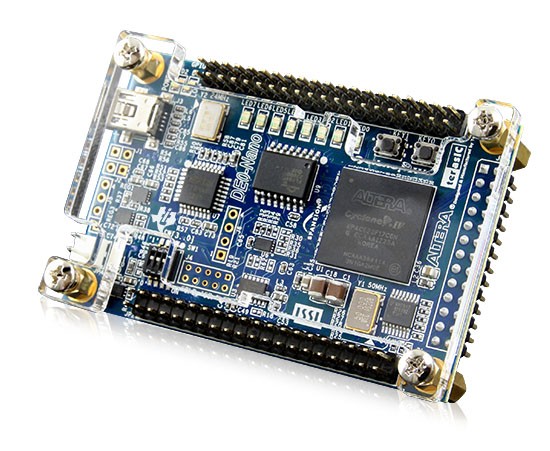
The ALTERA® DE0-Nano board introduces a compact-sized FPGA development platform suited for prototyping circuit designs such as robots and "portable" projects. The board is designed to be used in the simplest possible implementation targeting the Cyclone IV device up to 22,320 LEs. The DE0-Nano has a collection of interfaces including two external GPIO headers to extend designs beyond the DE0-Nano board, on-board memory devices including SDRAM and EEPROM for larger data storage and frame buffering, as well as general user peripheral with LEDs and push-buttons. The advantages of the DE0-Nano board include its size and weight, as well as its ability to be reconfigured without carrying superfluous hardware, setting itself apart from other general purpose development boards. In addition, for mobile designs where portable power is crucial, the DE0-Nano provides designers with three power scheme options including a USB mini-AB port, 2-pin external power header and two DC 5V pins.
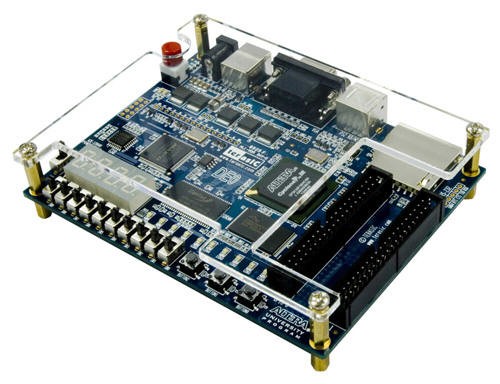
The ALTERA® DE0 Development and Education board is designed in a compact size with all the essential tools for novice users to gain knowledge in areas of digital logic, computer organization and FPGAs. It is equipped with Altera Cyclone III 3C16 FPGA device, which offers 15,408 LEs. The board provides 346 user I/O pins, and is loaded with a rich set of features that makes it suitable to be used for advanced university and college courses, as well as the development of sophisticated digital systems. The DE0 combines the Altera low-power, low-cost, and high performance Cyclone III FPGA to control the various features of the DE0 Board. The DE0 Development Board includes software, reference designs, and accessories required to ensure the user simple access in evaluating their DE0 Board.
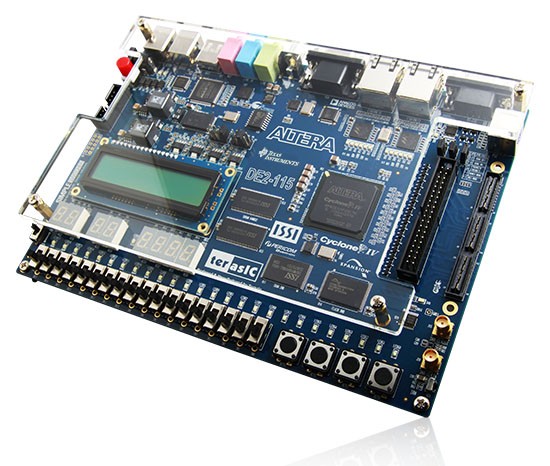
The ALTERA® The DE2 series has consistently been at the forefront of educational development boards by distinguishing itself with an abundance of interfaces to accommodate various application needs. Extending its leadership and success, Terasic announces the latest DE2-115 that features the Cyclone IV E device. Responding to increased versatile low-cost spectrum needs driven by the demand for mobile video, voice, data access, and the hunger for high-quality images, the new DE2-115 offers an optimal balance of low cost, low power and a rich supply of logic, memory and DSP capabilities. The Cyclone EP4CE115 device equipped on the DE2-115 features 114,480 logic elements (LEs), the largest offered in the Cyclone IV E series, up to 3.9-Mbits of RAM, and 266 multipliers. In addition, it delivers an unprecedented combination of low cost and functionality, and lower power compared to previous generation Cyclone devices. The DE2-115 adopts similar features from the earlier DE2 series primarily the DE2-70, as well as additional interfaces to support mainstream protocols including Gigabit Ethernet (GbE). A High-Speed Mezzanine Card (HSMC) connector is provided to support additional functionality and connectivity via HSMC daughter cards and cables. For large-scale ASIC prototype development, a connection can be made with two or more FPGA-based boards by means of a HSMC cable through the HSMC connector.